Lyra Constellation in drawings - Illustrations
Lyra Constellation in Pictures
In the original article "Lyra Constellation" many of the illustrations are shown using JavaScript, as a result, they may not be displayed on all devices, on this page all images are presented for viewing.
Google translator 2020, April, original text: Созвездие Лира в рисунках
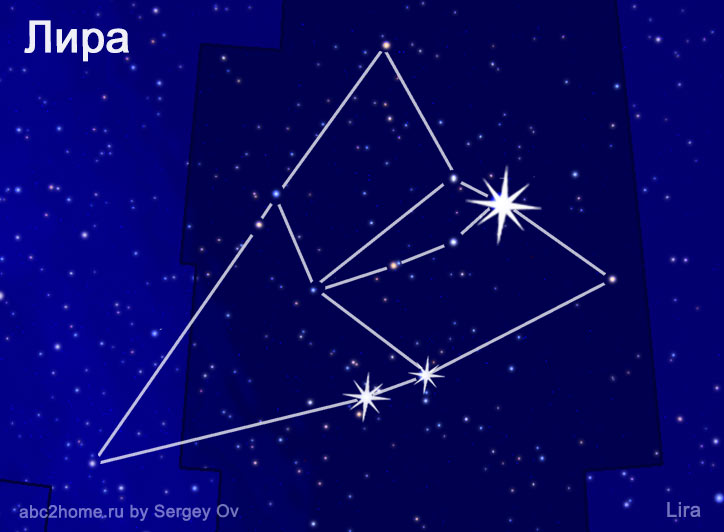 Lyra constellation
Lyra constellation
Fig. 1.Lyr. Lyra constellation, diagram
The constellation Lyra (Lyra) is the most multifaceted constellation of the Hercules Family,[1] although it ranks sixth in terms of angular area.
What kind of images were not placed on the section of the starry sky corresponding to the constellation Lyra - these are: and the edge of the wing of a huge mythical bird; and an eagle; and a vulture; and a falcon; and the iron-billed Stigfali bird; a turtle and even a ram, in addition, in the last millennia, they tried to place various stringed instruments here, mainly modifications of the lyre and harp.
Lyra belongs to the group of small constellations. In the areal ranking of the entire celestial sphere (sky), Lyra is fifty-second (52nd place), and among the constellations of the Northern Hemisphere, she occupies twenty-sixth place (286 square meters) after the constellation Coma Veronica.
The constellation Lyra is bordered by four constellations - these are Cygnus, Dragon, Hercules and Vulpecula.
Lyra on the territory of Russia is a partially setting, fully visible constellation (declination from 25.5 ° to 47.5 °).
The constellation Lyra reaches its midnight culmination in the middle of summer and stays in it from the third decade of June to the end of the second decade of July (right ascension from 18h 10m to 19h 24m).
Stars and schemes of the constellation Lyra
The constellation boundaries and most of the visible stars are shown in Figure 2.Lyr. - view of the constellation Lyra at the moment of culmination (in this perspective, it is customary to represent the constellations in astronomy):
Fig. 2.Lyr. Lyra constellation. Historically established and IAU-approved names for the most conspicuous stars
Fig. 2.1 Lyr. Lyra constellation - Lyra stars. With the help of this drawing, you can practice drawing the contours of the constellation Lyra.
The main astronomical "exhibits" of Lyra are its brightest star Vega, as well as the planetary Ring Nebula available for observation with household optics.
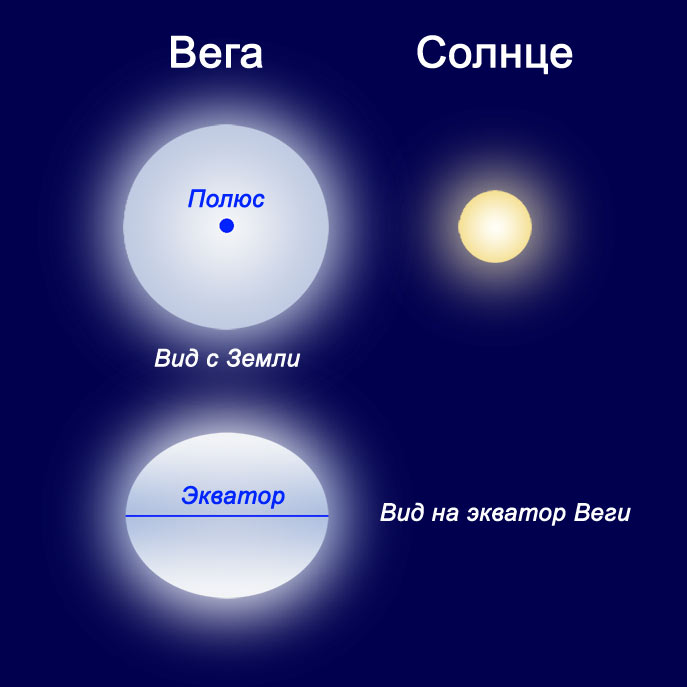
Fig. 3.Lyr. Alpha Lyrae - Vega
Vega, Alpha Lyrae, a bright white main sequence star located at a distance of 25.3 light years from the Sun, is the polarissima of planet Earth
(due to the precession of the Earth's axis, it periodically becomes the Pole Star - the brightest star as close as possible to the celestial Pole of the World - next time this will happen in 12 thousand years).
The second attraction is the planetary Ring Nebula (NGC 6720, M 57, or Messier 57), which can be found near Beta Lyra, Sheliak (Fig. 2.Lyr.).
Unfortunately, the nebula has an apparent magnitude of +8,8m, and without optics it will not work to see the nebula ...
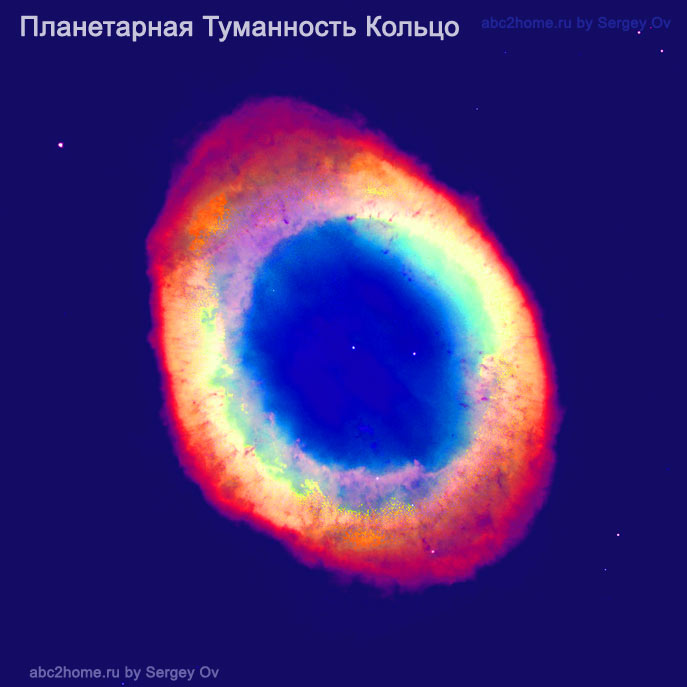
Fig. 4.Lyr. Ring Planetary Nebula
As the main scheme of Lyra's stellar drawing, the image of the lyre resting on the neck of the Cygnus was chosen, although here there is a violation of the boundaries of the constellation, but the greatest correspondence to the Myth of Orpheus and Eurydice was achieved (Fig. 5.Lyr):
Fig. 5.Lyr. The constellation Lyra (Lyra - lat.). Orpheus Musical Instrument Star Chart (Outline Image)
The author's version of the diagram by the stars (outline image) of the lyre).
The schematic visualization of Lyra by stars, shown in Figure 5. Lyr, is already used to depict the constellation Lyra on the planetarium map: "The Starry Sky of Russia".
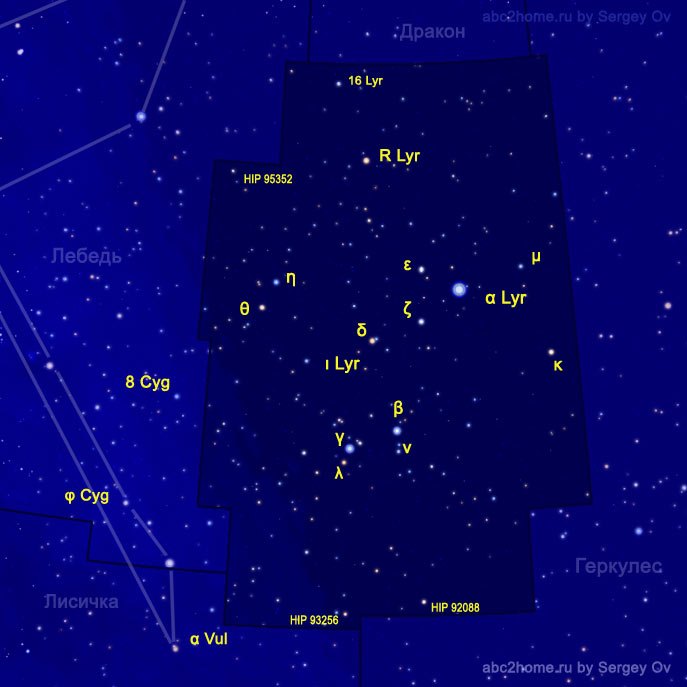
Fig. 5.1.Lir. Lyra constellation: Lyrae star designations according to Bayer
When a constellation contains a large number of relatively bright stars, then, as a rule, it is possible to create a variety of graphic designs from the lines connecting these stars.
Figure 6.Lir shows four alternating schematic representations of the Taurus stars that can be found at the moment of its culmination:
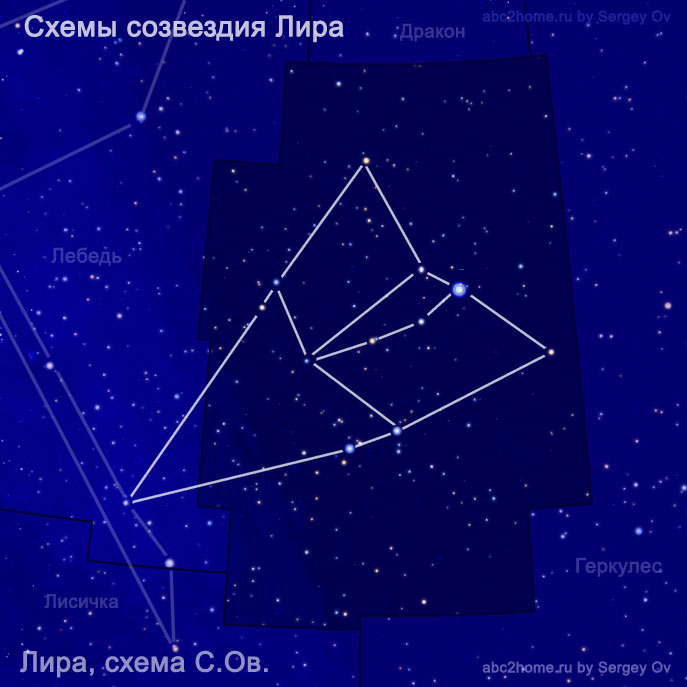
Fig. 6.1.Lyr. Lyra constellation scheme, the author Sergey Ov
Figures 6.Lyr. Variants of schematic images obtained using the stars of the constellation Lyra - view at the culminating position of the constellation
The most compact and striking pattern of the stars of the constellation Lyra is the image of the Falcon (Fig. 7.Lyr). With a good imagination, in the place of the Falcon, one can imagine both a kite and a vulture and even a Stymphalian Bird (Or maybe a Raven?), And a special place is given to this schematic drawing:
Fig. 7.Lyr> Falcon - a schematic drawing based on the stars of the constellation Lyra
Lyra stars also allow you to create a more similar image to the original image of the Vulture or Kite, as well as a very dynamic drawing of a diving Stymphalian Bird and two more "masterpieces" not connected with the incarnation of a bird - take a look at the alternating schemes of drawing 8.Lyr:
Fig. 8.Lyr. Schematic drawings of the stars of the constellation Lyra
The East-West direction is no less fruitful for drawing up schematic drawings. Figure 9.Lyr shows a set of schematic images of stars that you can imagine when looking at the constellation from east to west:
Fig. 9.Lyr. Drawings of the stars of the constellation Lyra, viewed from east to west
If you look at the constellation Lyra from north to south, then the largest drawing, filling almost the entire space allotted to the constellation, is a romantic image of a dancing woman, a ballerina, or, if you look closely, a more prosaic one - a variety show dancer (Fig. 8.Lyr):
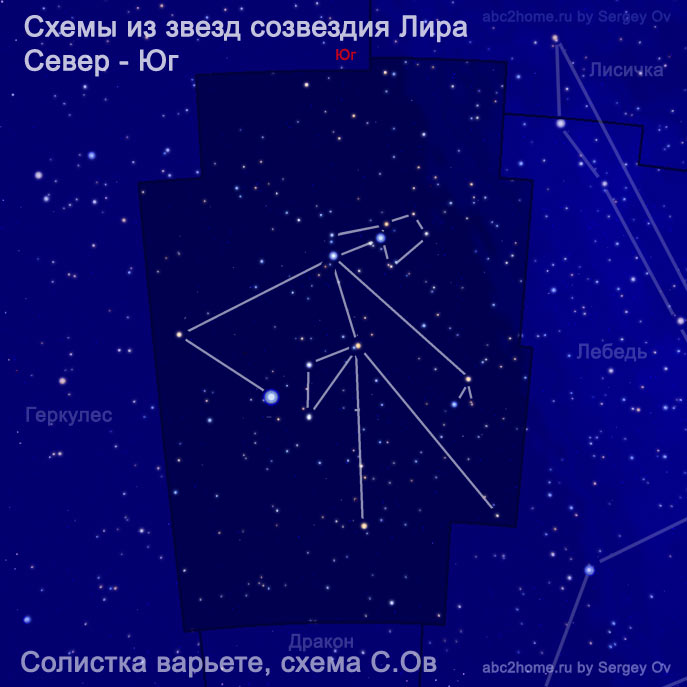 Sergey Ov
Sergey Ov
Fig. 10.1 Lyr. Variety dancer with mace and castanets
Fig. 10.Lyr. Variety soloist - a schematic drawing of the stars of the constellation Lyra
Looking at the lines of figure 10.Lyr, one can imagine a variety show dancer with a mace and castanets. If you move the cursor to the picture, then, in addition to the designations of the stars, a second version of the picture of the soloist of the variety show will appear, or, perhaps, is it Carmen who pulled out the dagger?
When looking at the constellation Lyra in the west-east direction, a modern observer can imagine a UFO as an image that fills the allocated area to the maximum, in addition, after the release of Melville's book "Moby Dick, or the White Whale", a part of humanity who can read suspected sperm whales in intelligence, along with dolphins, and the image of the sperm whale has become recognizable for many - this is the largest picture of the lines connecting the stars in a series of drawings 11.Lyr:
Fig. 11.Lyr. Drawings of the stars of the constellation Lyra, built when looking at the constellation Lyra from west to east
For stargazers of primary school age:
The best time to study the stars of the constellation Lyra is in the middle and second half of summer, just during school holidays. But in September and even November, Lyra can be seen in the evening in the western part of the starry sky.
You will probably agree without any dispute that the most beautiful and gracefully miniature drawing of the stars of the constellation Lyra is the image of a moth (Fig. 12.Lyr):
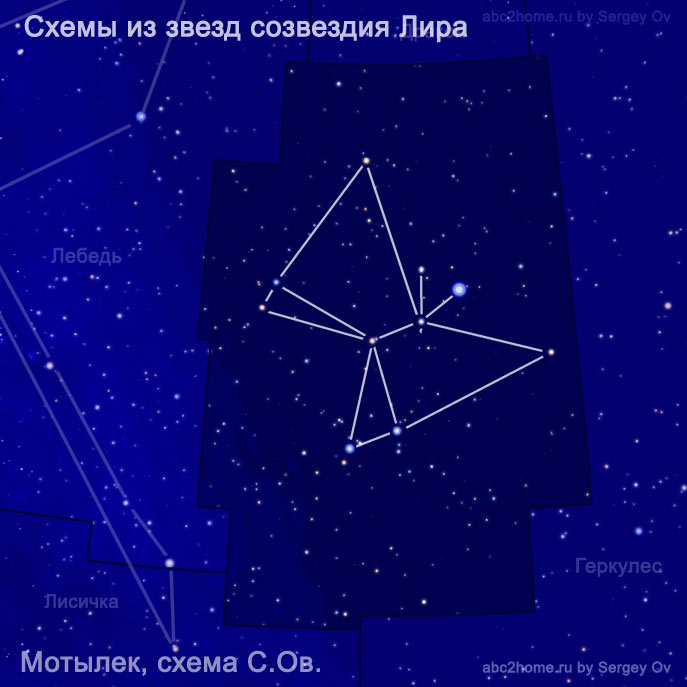 Sergey Ov
Sergey Ov
Fig. 12.1.Lyr. Moth scheme
Fig. 12.Lyr. Moth - an image of the lines connecting the stars of the constellation Lyra
Another memorable drawing of lines between the stars is the image of the Snail:
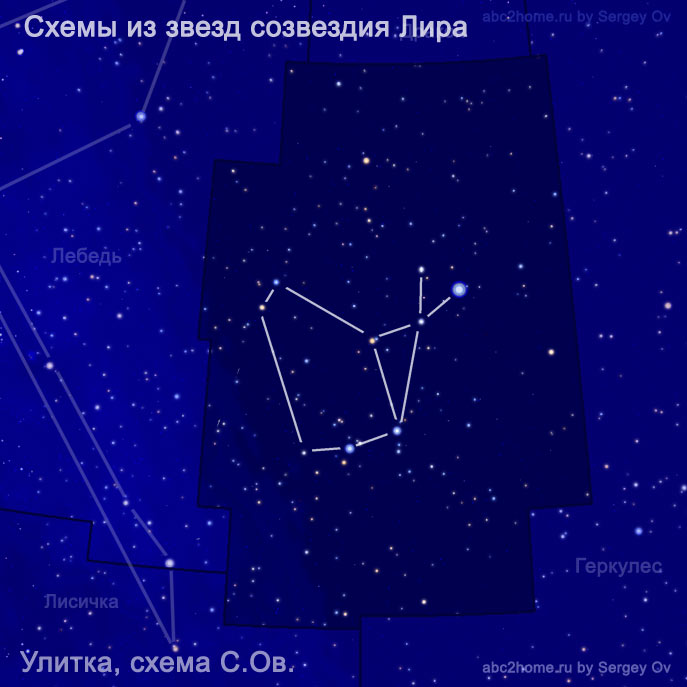 Sergey Ov
Sergey Ov
Fig. 13.1.Lyr. Snail diagram
Fig. 13.Lyr. Snail - a drawing of lines between the stars of the constellation Lyra
Among the schematic drawings of the constellations there is another snail - the lilac-pink Snail on the Hillside.
(Try to find this second Snail - Hint at the bottom of the page)
Those who are familiar with Lewis Carroll's fairy tale "Alice in Wonderland" will understand the following axiom:
In any constellation, you can find traces of the smile of the Cheshire Cat.
This axiom was confirmed twice - we managed to find two smiles of the Cheshire Cat. The biggest Smile, on almost the entire constellation, was revealed when looking at the constellation from east to west, it is shown in Figure 14.Lyr:
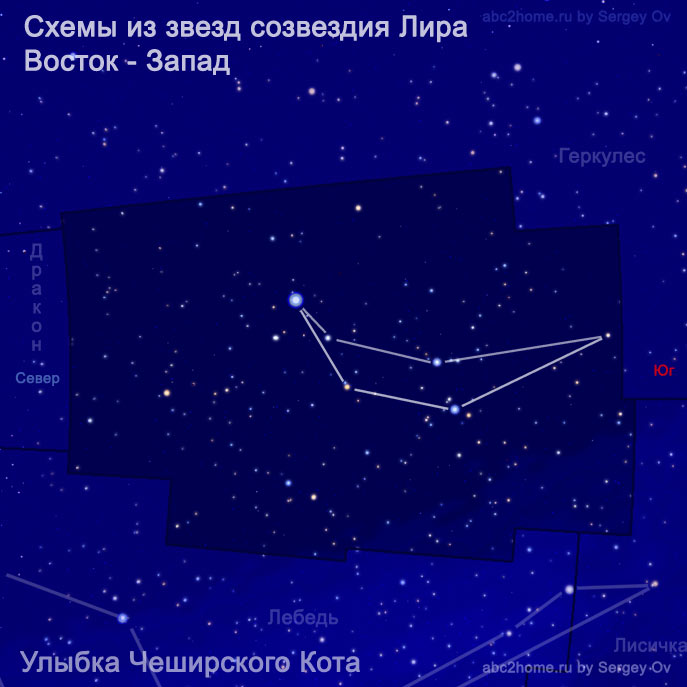 Sergey Ov
Sergey Ov
Fig. 14.1.Lyr. Smile of the Cheshire Cat, scheme
Fig. 14.Lyr. Smile of the Cheshire Cat - drawing from the stars of the constellation Lyra
In order to make sure that it really is the Smile of the Cheshire Cat, move the cursor to the picture or touch it on the touch screen and you will see the disappearing Cheshire Cat.
Now you can understand Alice's surprise:
“I often saw cats that did not smile,” thought Alice. - But a smile without a cat! This is the most incredible thing that I have seen here. " (Lewis Carroll, Alice in Wonderland.)
I suppose finding a second smile will not be difficult - it is hidden in one of the drawings of the constellation Lyra.
In addition to the Cat's Smiles in the constellation Lyra, the contours of one many already forgotten toy were discovered - this is a drawing of a whirligig:
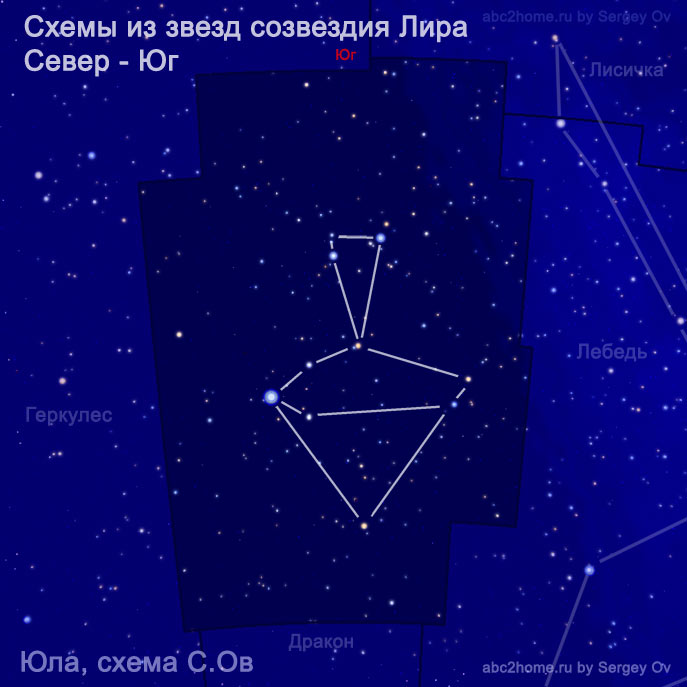 Sergey Ov
Sergey Ov
Fig. 15.1.Lyr.Whirligig, scheme
Fig. 15.Lyr. Whirligig - a drawing of lines connecting the stars of the constellation Lyra
Pay attention, the image of the Whirligig in Figure 15. Lyr was obtained when looking at the constellation from north to south, that is, we are looking at the constellation turned upside down.
Asterisms of the constellation Lyra
Since ancient times, asterisms[4] in the constellation Lyra were created in order to uniquely identify Vega using the minimum number of stars.
Since Vega is the second brightest star in the northern half of the sky, it, along with Arcturus, can be noticeable even in poor visibility conditions arising from haze or city light. In this case, experienced observers can identify Vega using the second and third brightest stars in the constellation - Sulafat (γ Lyr, 3.25m, blue-white) and Sheliak (β Lyr A, 3.52m, white).
The image of the "Stick" asterism emerging from the haze is presented in a series of figures 16.Lyr:
Fig. 16.Lyr. Drawing from the stars of the constellation Lyra
The largest ancient asterism of the constellation is the "Big Turtle". Probably no less ancient can be considered the similar-sized asterism "Shamrock" (Fig. 17.Lyr):
Fig. 17.Lyr. Shamrock - an image of lines connecting the stars of the constellation Lyra
The "Shamrock" asterism is specially depicted in a separate drawing, since the symbol contained in it has several ancient roots.
The origins stretch back to the times of Babylon and, possibly, Sumer. In those days, the Shamrock is a symbol of the Triads, one of the basic concepts of the idealistic-philosophical worldview. For example, the three zodiac signs Aries, Leo, Sagittarius are united by the generating primary element "Fire" and reflects its three stages: combustion (birth); burning (maturity) and attenuation (old age).
In religious symbolism, the shamrock is often replaced by the triquetra - in Christianity, one of the symbols of the Holy Trinity.
But in Ireland, thanks to the mission of the First Irish Preacher of St. Patrick, the shamrock is associated with both the image of the clover leaf and the Trinity.
According to legend, Saint Patrick used a clover twig to illustrate the Trinity. In memory of this, in Ireland, the Shamrock is called Seamrog (in translation "clover" - Seamróg. Is samhailchomhartha Éireannach í.) The English translated Irish in their own way, as a result, the word acquired the fatal sound of Shamrock - Shamrock.
Currently, the Shamrock-Seamróg is the second official version of the coat of arms of Ireland, following the image of the Harp.
Since both the Shamrock (Fig. 17.Lyr) and the Harp (Fig. 6.4.Lyr) are present among the schematic representations of the constellation Lyra, Lyra can be considered a constellation of the celestial symbols of Ireland!
Asterisms can be constructed as drawings of stars both within a constellation and based on the brightest stars from several different constellations.
The constellation Lyra acts as a co-founder of the seasonal asterism Summer Triangle (Summer-Autumn):
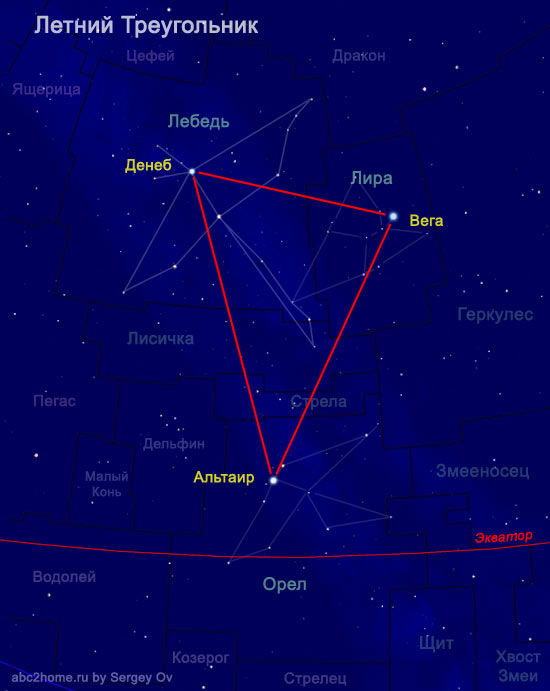
Fig. 18.Lyr. Seasonal asterism Summer Triangle.
How to find the constellation Lyra
The constellation Lyra at the latitudes of Central Russia and further north can be observed all year round. The best time to get acquainted with the constellation Lyra is from June to October, when the constellation is near zenith in the evening.
It should be noted that Vega never goes beyond the horizon for observers located north of the latitudinal line "London - Dortmundt - Leipzig - Kursk - Voronezh - Saratov - Orenburg - Pavlodar - Ulan-Ude - Chita". For southerners, who may not have Vega at all in the starry sky, the search for Lyra with the help of other constellations becomes an urgent topic (Fig.19.Lyr):
Figure: 19.Lyr. How to find the constellation Lyra using the constellations Pegasus, Cygnus, Cassiopeia, Ursa Minor and Hercules
Unfortunately, an accurate direct sight directly at Vega from the bright stars of well-known constellations does not work. Although, two hits were still found.
The first hit in Lyra is obtained using the stars of two constellations, Pegasus and Cygnus: We draw the line Scheat (β Peg, 2.44m, red) - Sadr (γ Cyg, 2,23m, white-yellow) and on its continuation we find Vega (yellow arrow in Figures 19.Lyr и 20.Lyr).
The second hit in Vega is obtained by aiming at not very bright stars of the third and fourth magnitude Rutilikus (ζ Her, 2.81m, white-yellow) - Rukbalgeti Genubi (θ Her, 3.86m, orange) of the not very popular constellation Hercules (red arrow, Fig. 19.Lyr).
The bright stars of W-Asterism Cassiopeia guarantee higher reliability of search methods based on it, so the following two figures illustrate how to find the constellation Lyra, starting from Cassiopeia.
Рис. 20.Lyr. How to find the constellation Lyra using the stars of the constellations Cassiopeia, Pegasus and Cygnus
Probably, someone still had a question: "What does the sighting from Scheat from Pegasus have to do with the search from Cassiopeia?"
The fact is that Scheat can also be easily found using the stars of Cassiopeia (Fig. 21.Lyr):
Рис. 21.Lyr. How to find the constellation Lyra using the stars of the constellations Cassiopeia and Pegasus
Now it remains only to correctly determine the angular dimensions of the constellation Lyra. In Figure 22.Lyr, the constellation is shown in the position that it can be seen overhead on a summer or autumn evening, facing south or southwest.
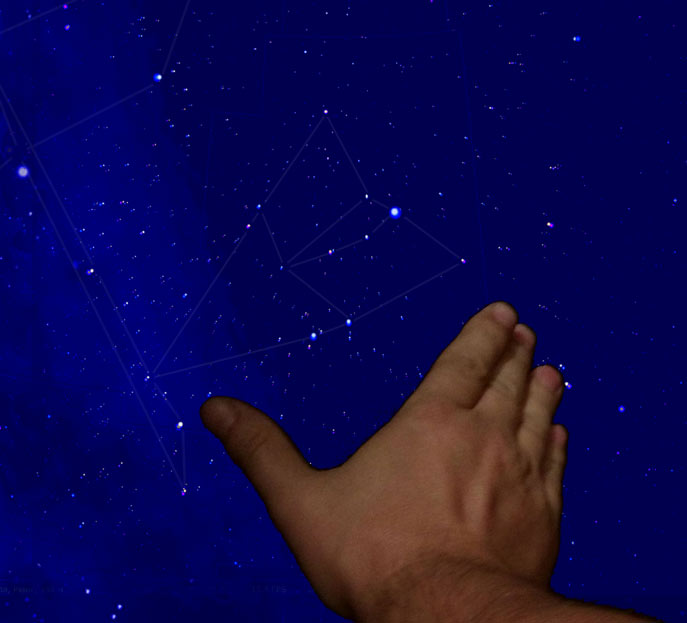
Рис. 22.Lyr. Estimating the angular size of the constellation Lyra using an outstretched arm
The angular size of Taurus can be estimated based on the results of calculations of the angular distance between the stars of the constellation, for example, the angular distance from the star Vega to the second brightest star Sulafat is 7.55°(The angular distance between the stars - online calculation), and the angular distance between the eastern and western boundaries the constellation on the shortest line through Vega is 14.4 °.
Lyra and a polyarissimes relay
On April 23, 2102, our modern Polar Star will seem to pass very close to the Pole of the World (the minimum angular distance will be 27′34 ″) and will begin to move away from it
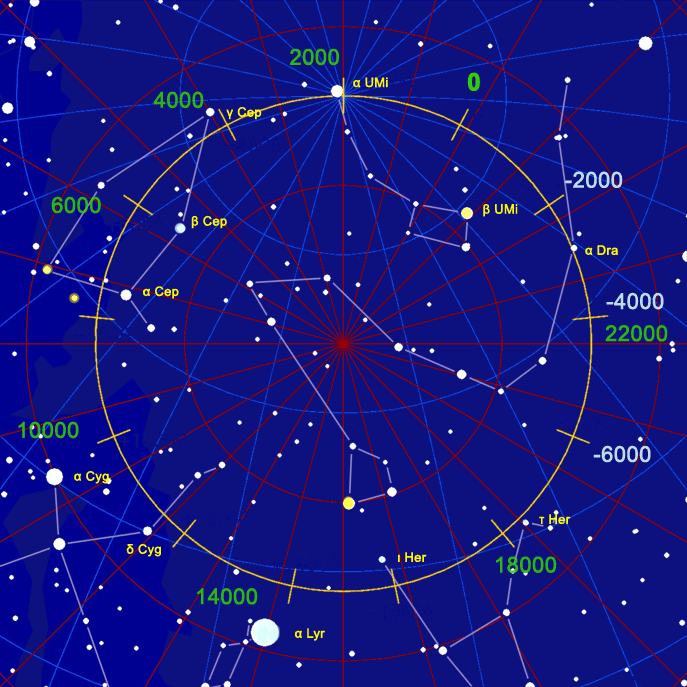
Fig. 23.Lyr. The precessional circle outlined by the earth's axis in the starry sky
With the help of the drawing of the precession circle of the earth's axis, we can reproduce the history of the polar glory of the constellations and stars, as well as make a forecast for millennia ahead!
History and mythology of the constellation Lyra
The first artifacts associated with the region of the heavens occupied by the modern constellation Lyra can be attributed to the III millennium BC.
In particular, a relief drawing on a cylindrical stone seal dating from 2400 - 2300 BC (Seal of the scribe Adda). A photograph of an imprint of a seal on clay depicting Enki and his symbolic companions Capricorn and the bird Imdugut is shown in Figure 24.Lyr:
Fig. 24.Lyr. Clay print of the ADDA stone seal dating from 2300 BC
Impression on a clay plate of a cylindrical seal of the scribe Edda
2300 BC, The British Museum, B.M.89115
A diabase seal dating from 2300 BC depicts the Sumerian gods of light and dark forces with their symbolic animals and attributes.
The gods of light forces (in profile): the sun-god Shamash, the god of water elements Enki (Ea) and his assistant, the two-faced god Isimud.
The water god Enki / Ea is surrounded by sacred animals: Pisces, a goby with horns like a goat - Capricorn and the fighting bird Imdugut.
Gods of dark forces (full face): God of hunting and war Nergal (?) And goddess of treachery Ishtar.
In all likelihood, the seal depicts the moment before the start of the martial arts of the gods..
The seal is kept in the British Museum: The British Museum, The Adda Seal, Museum number 89115, 2300 BC.
The mirror image of such a sketch brings her back to the earthly appearance of the night sky. The results of combining the specular reflection of a fragment of the print and the map of the starry sky are shown in Figure 25. Lyr:
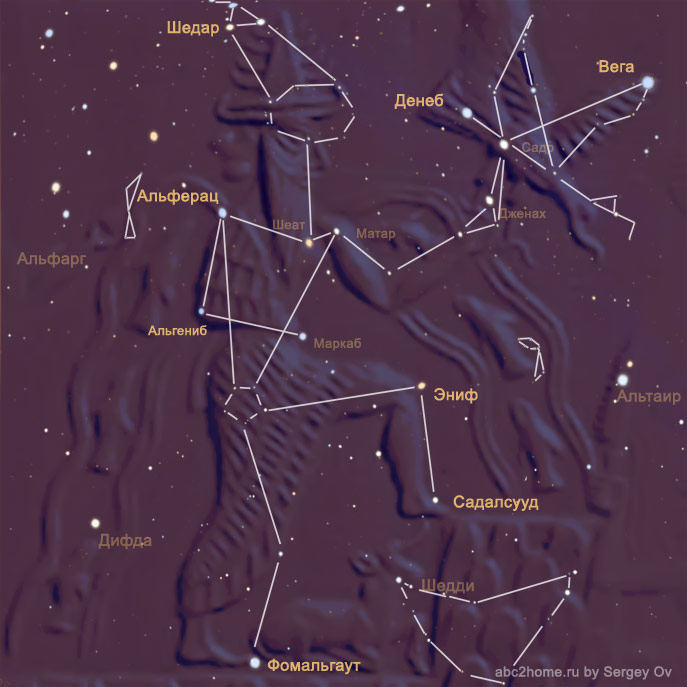 Sergey Ov
Sergey Ov
Fig. 25.1.Lyr. An enlarged fragment of the stone seal impression (The seal ADDA). The figure is shown in a mirror image. Combining the map of the starry sky and the image of Enki with the Bird Imdugut (Anzud)
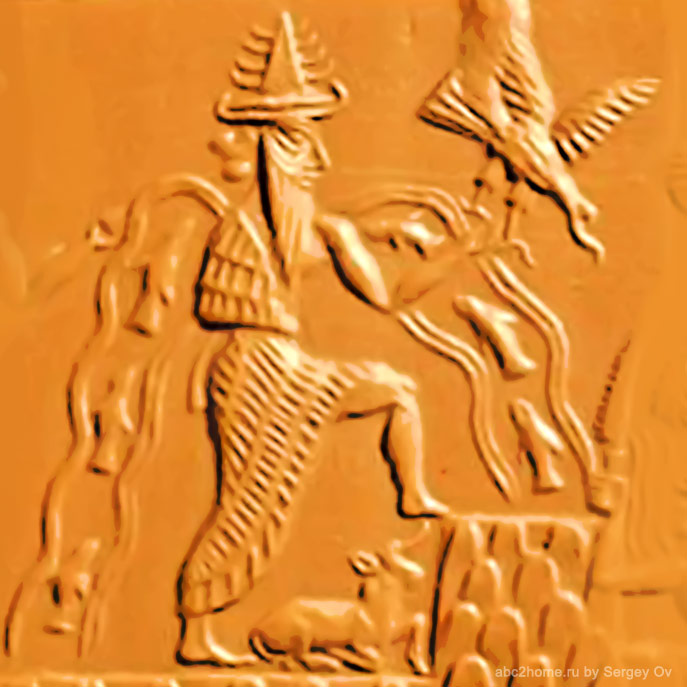
Fig. 25.2.Lyr. Enlarged image of a fragment of a clay print
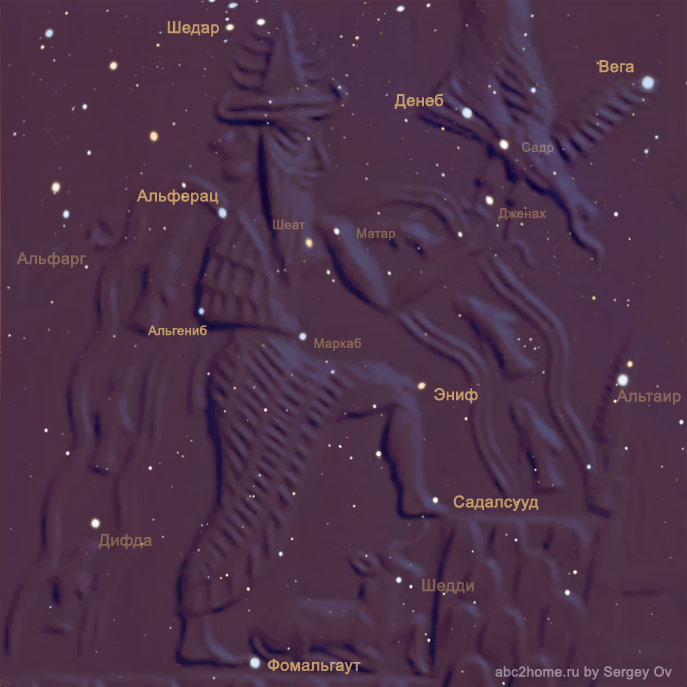
Fig. 25.3.Lyr. An image of a section of the starry sky, which includes the constellations of Pisces, Cygnus, Lyra, Pegasus, Aquarius and Capricorn
Fig. 25.Lyr. An enlarged fragment of the stone seal impression (The seal ADDA). The figure is shown in a mirror image. Combining the map of the starry sky and the image of Enki with the Bird Imdugut (Anzud)
Seasonal asterism Summer Triangle "Vega - Altair - Deneb" from ancient times suggested the idea of the merger of its stars into a single constellation, or at least about the unification of the constellations with these stars. It was possible to unite the constellations only in the late antique era, when Pausanias, colorfully describing the victory of Hercules-Hercules over the copper-billed Stymphalian Birds, suggests placing his image in heaven, while the Lyra constellation is assigned the role of one of the terrifying Birds.
Apparently, this proposal found supporters, which is confirmed by Figure 26.Lyr, but only in the western part of the Roman Empire, since the contemporary of Pausanias living in Alexandria Claudius Ptolemy describes the constellation Lyra as a heavenly embodiment of the musical instrument of Orpheus, and even calls Lyra itself bright star.
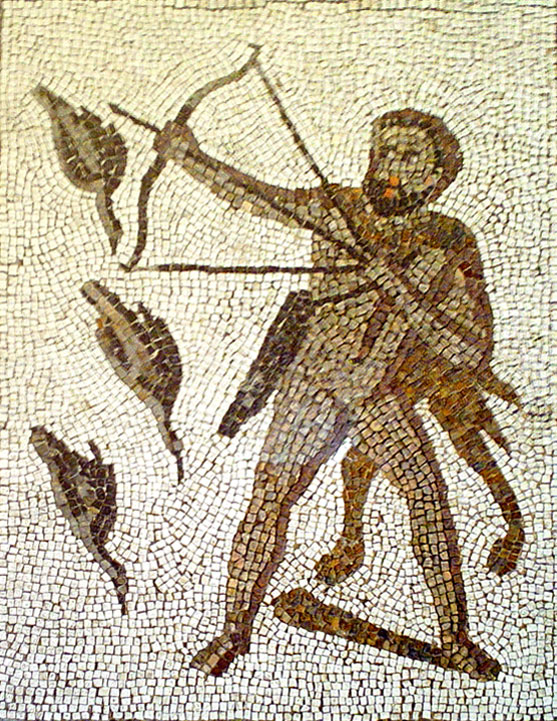
Fig. 26.Lyr. Mirror reflection of a fragment of a mosaic from Llidia "Hercules and the Stymphalian Birds". Mosaic, limestone, National Archaeological Museum of Spain, Madrid
Abu-l-Hussein Abdurrahman ibn Umar al-Sufi in the 10th century AD in his "Book of Fixed Stars", following Ptolemy, represents the prototype of Lyra (Fig.20.Lyr):
Fig. 27.Lyr. The constellation of Lear in Al Sufi. Book of the constellations, or fixed stars. - Library of Congress. World Digital Library - informationally not the best, but the most beautiful list of the 15th century, commissioned by Ulugbek)
The image of Lyra in Jan Hevelius's atlas "Uranographia" (published in 1690), plunged into bewilderment many astronomers, the author simply drew a portrait of an eagle holding an object with its claws, as if denoting a lyre, and did not even try to tie the drawing to the stars (it seems that the author was unpleasant to deal with this part of heaven).
The drawing of the constellation is illustrated by a collage created on the basis of a painting from the atlas of Jan Hevelius, by mirroring it, to give a view "from the inside of the celestial sphere":
Fig. 28.Lyr. The constellation of Lyra - a collage based on a drawing in the atlas of Jan Hevelius (only those stars are highlighted that were entered by Hevelius himself in the atlas)
Sergey Ov (Seosnews9)
Illustrations for the article: Illustrations for the page: Lyra Constellation (Lyr), is the most multifaceted constellation Hercules's family.
Separate pages with illustrations:
Perseus constellation in the drawings
Cygnus constellation in the pictures
Aries constellation in the drawings
Lyra constellation in the pictures
Aquila constellation in the drawings
1. The group of Hercules will include the constellations:
Cygnus, Lyra, Hercules, Vulcepula, Sagitta, Aquila, Scutum, Serpens, Ophiuchus.
Fig. 16.Her. Hercules Family of constellations
The constellations Hercules, Ophiuchus, Serpens are united by a common mythical plot, and so to speak, the Scutum, Sagitta, Lyra, Vulpecula and the Aquila "crept into the group" got here mostly due to common borders. The Cygnus was probably added to the group because its brightest star is the pinnacle of the seasonal asterism "Summer-Autumn Triangle" (Altair-Deneb-Vega), as well as due to the existence of the myth of the Stymphalian birds and the myth of Orpheus, which unites the constellations Lyra and Cygnus.
When I first met the groups of the constellations Ursa Major (10 constellations) and the Zodiac (12 constellations) created by Donald Menzel, I just quietly rejoiced: “Well, I found a way to better remember the constellations!”.
I was glad when it came to the group of Perseus constellations (9 constellations) and the Orion group (5 constellations) - everything is compact and logical.
And now the turn came up to the Hercules group proposed by Menzel: 19 constellations, which are half scattered in different parts of the sky - this is not something to remember, it is inconvenient to search!
Therefore, it was decided that in the future the Menzel’s list of the Hercules group should be divided into two groups - northern and southern: for the northern group, we will retain the old name “Hercules group” (9 constellations or 10 if we count the tail and head of the Snake separately), and for the southern one - for now a working title is proposed: "Centaurus group" its list of constellations will probably still need to be edited.
Hercules is the Roman name for the ancient Greek hero Hercules. In the mythological plot set forth here, we restrict ourselves to a list of exploits suitable for our northern Hercules constellations family:
The myth of the exploits of Heracles / lat. Hercules / (summary)
When Hercules was still a baby, Hera, the wife of Zeus, learning about an illegitimate child, sent two snakes to him. The snakes were supposed to strangle the baby, but Hercules showed remarkable strength and himself strangled the snakes by grabbing them by the throat -the constellations Ophiuchus and Serpens can display this scene.
When the matured Hercules was forced to perform his exploits in the service of King Eurystheus, the fourth of them was the expulsion of the Stimphalian birds from the Peloponnese Peninsula - in some sources the role of the Stimphalian birds is assigned to the constellations Aquila, Cygnus and Lyra.
The constellation Hercules and the constellation Dragon located above represent the scene from the last twelfth feat of Hercules: the moment when Hercules-Hercules is trying to lure the Dragon guarding the Hesperides garden to treat him with a club is captured on the canvas...
Google translator, December 2019
2. Asterism - a group of stars, forming a characteristic pattern and having an independent name. Asterism can be as part of a constellation, for example, Tron, and combine several constellations, for example, the Summer Triangle.
3. Navigation stars are the stars used in navigation and aviation to determine the position of ships and airplanes in the event of a technical failure. Currently, the stars listed in the “Marine Astronomical Yearbook” are classified as navigational.
4. The photosphere is the deepest and densest layers of the star's atmosphere (including the Sun), from which the main share of the energy emitted by it comes out.
5. Right ascension and declination - the name of the coordinates in the second equatorial frame of reference
6. The proper motions of stars — the apparent angular displacements of stars in the celestial sphere for the year.
Great Soviet Encyclopedia, 3 ed. 1969 - 1978
● Home
 Zodiac signs
Zodiac signs
 Constellations
✔ Lyra Constellation in Pictures
Constellations
✔ Lyra Constellation in Pictures


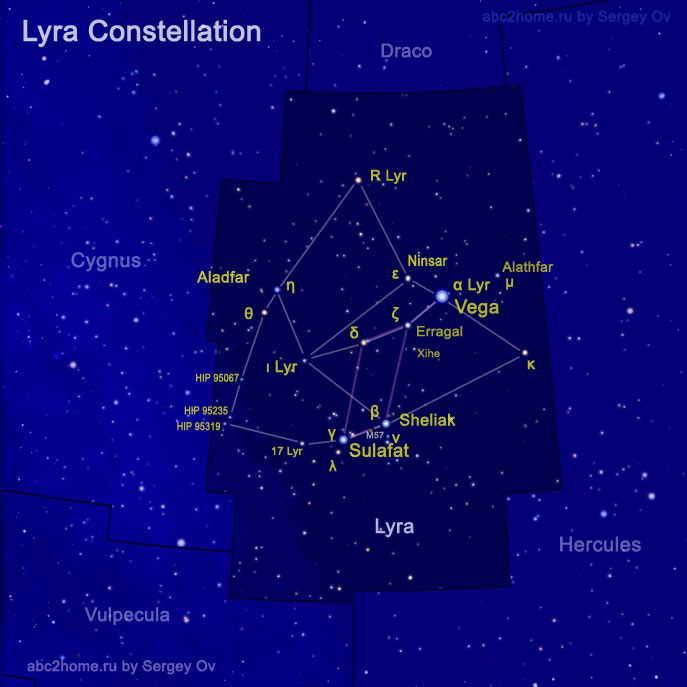
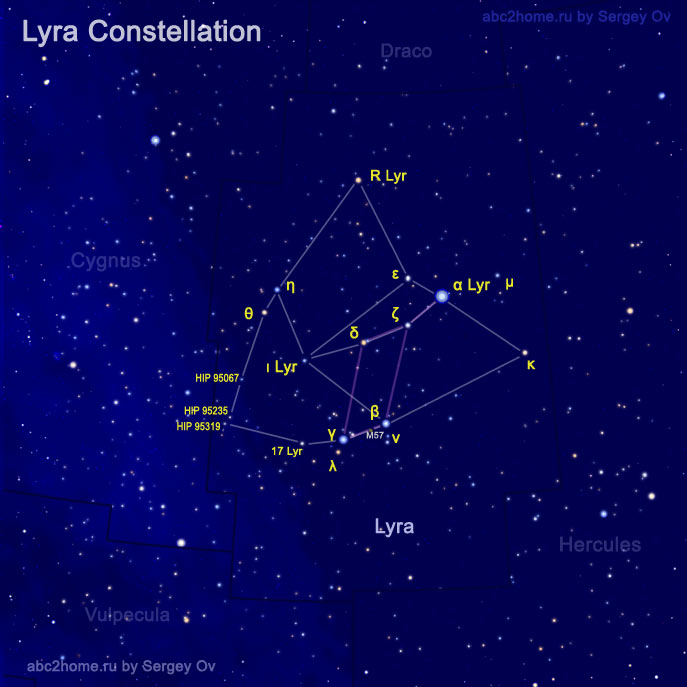
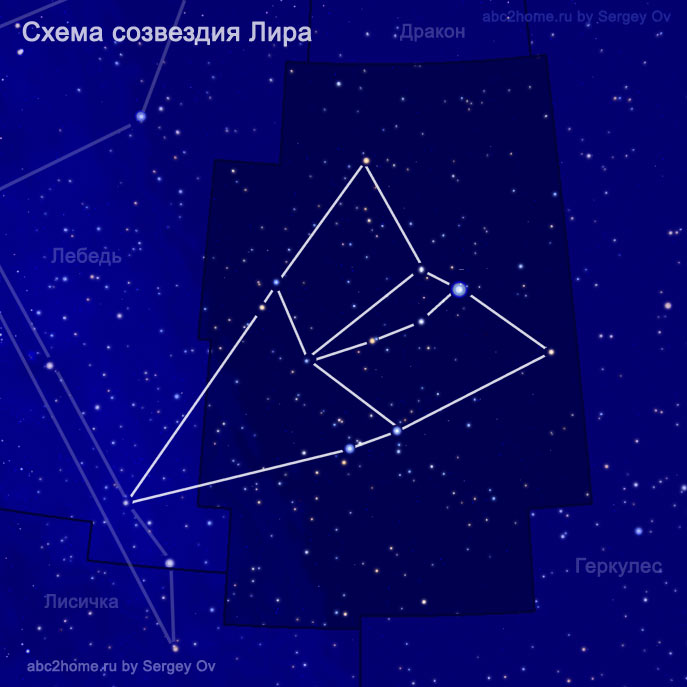
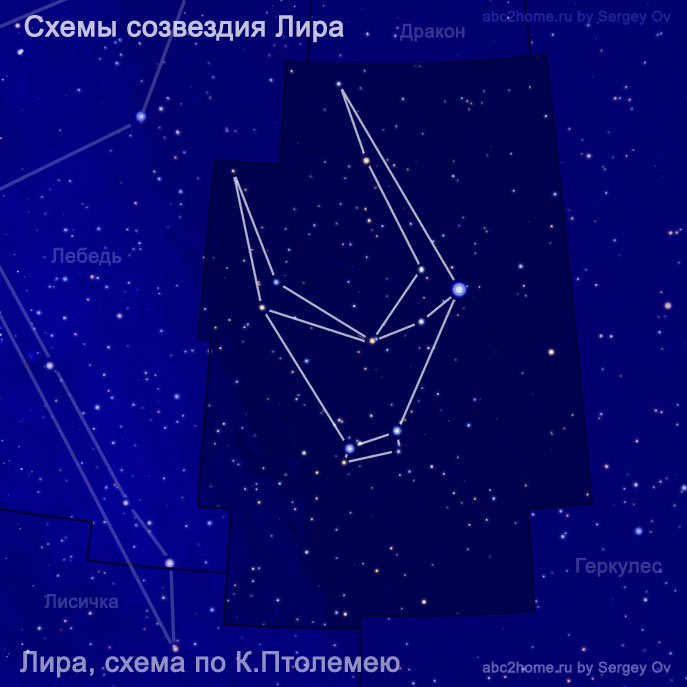
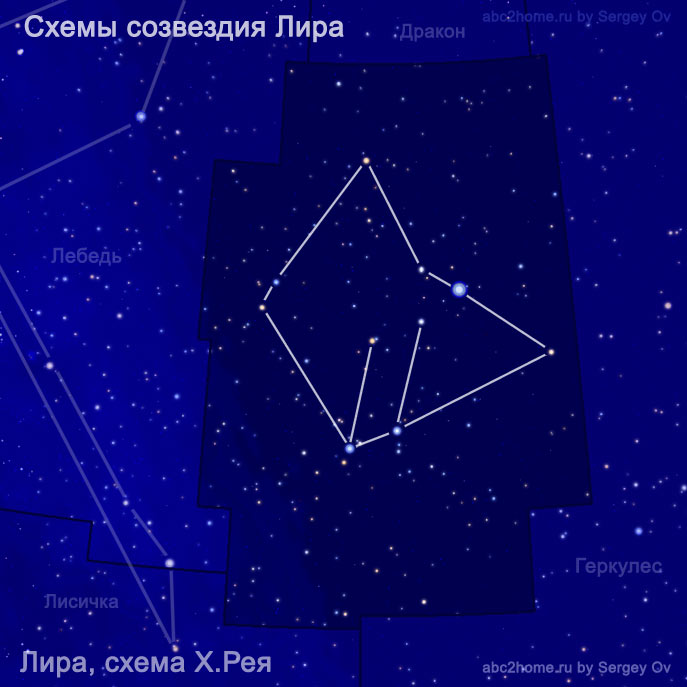
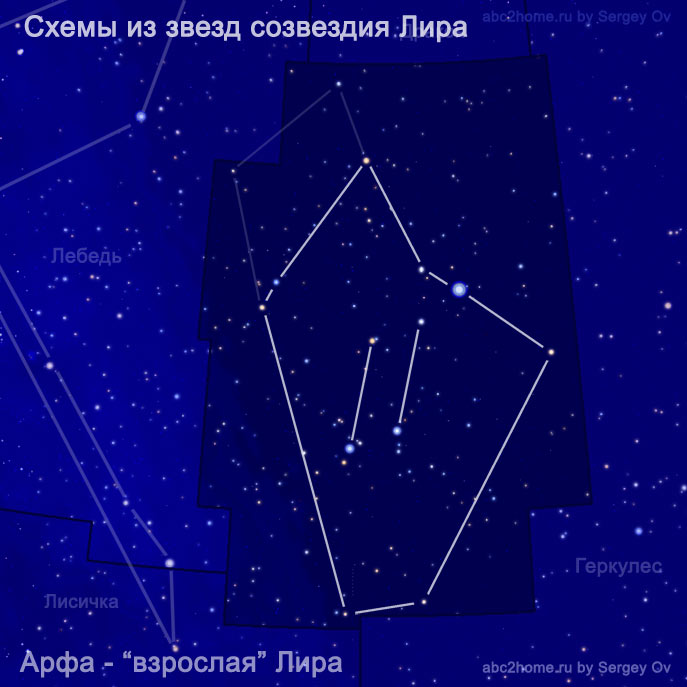
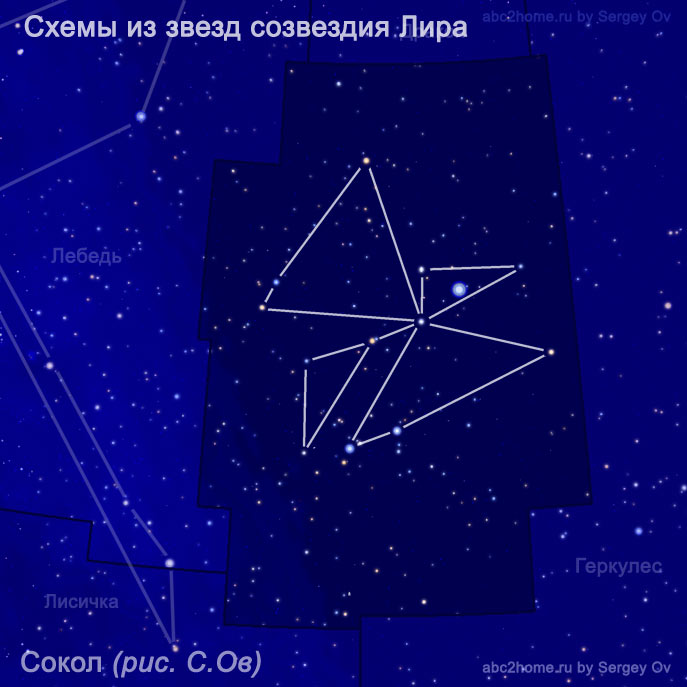
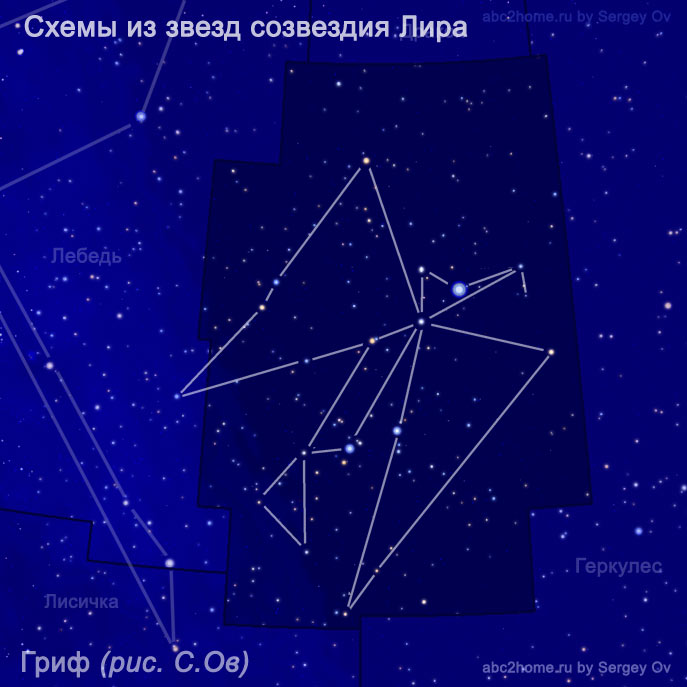
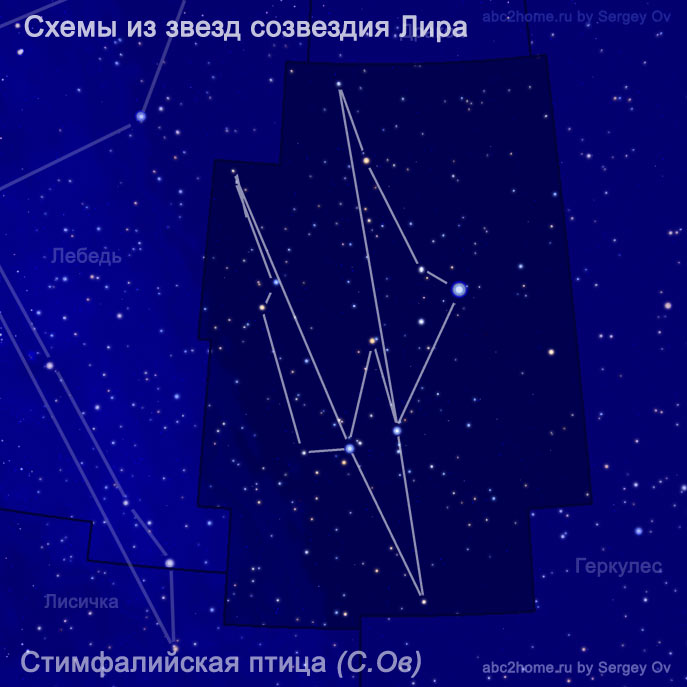
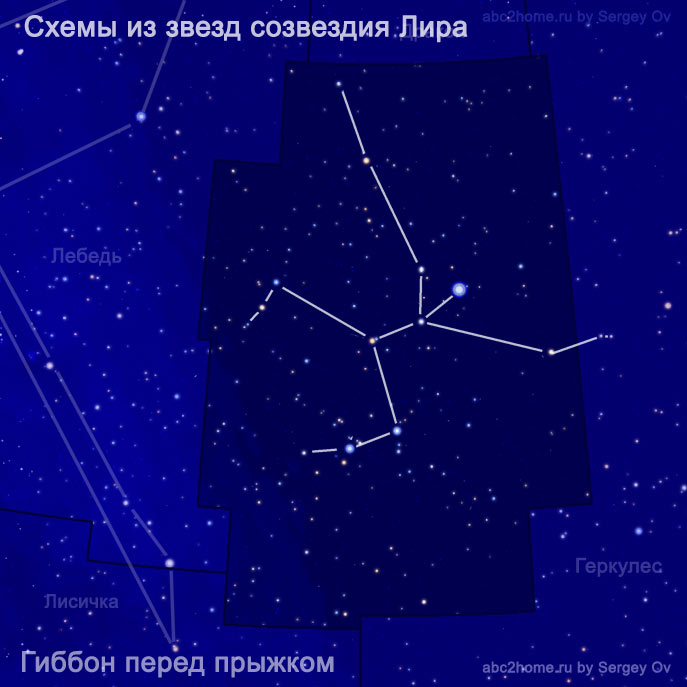
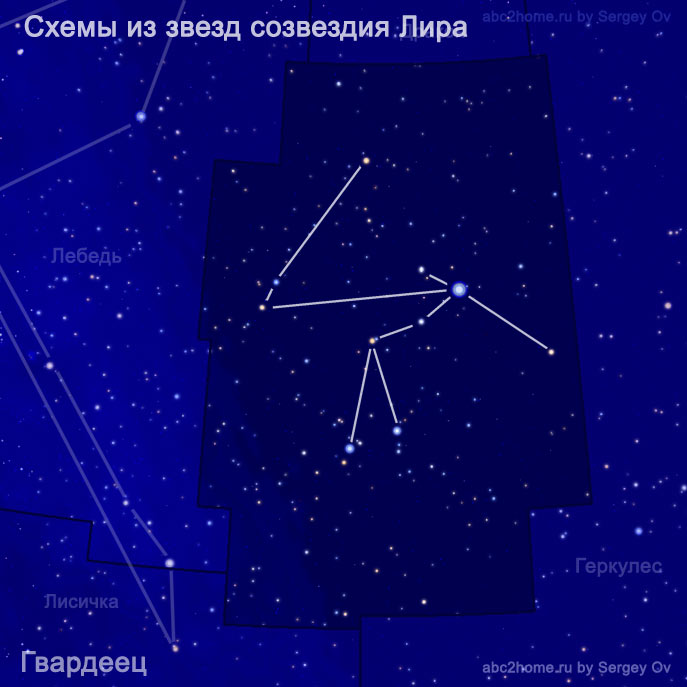
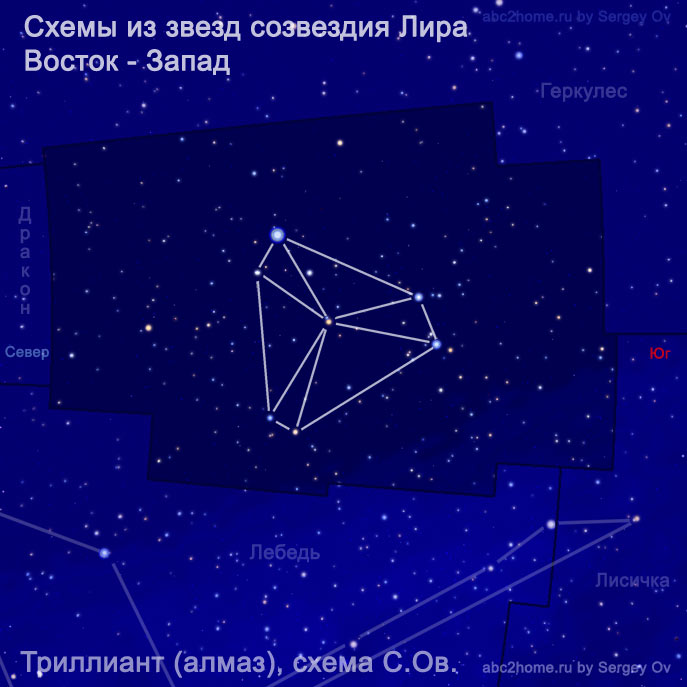
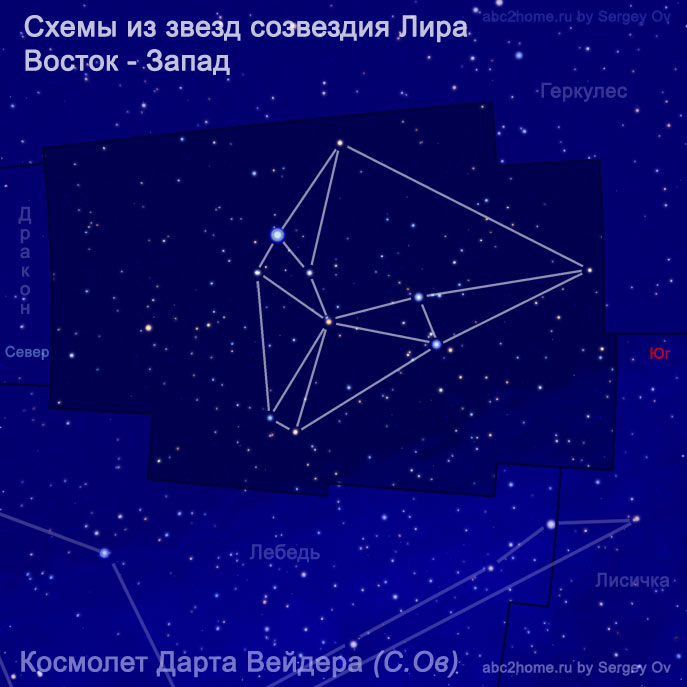
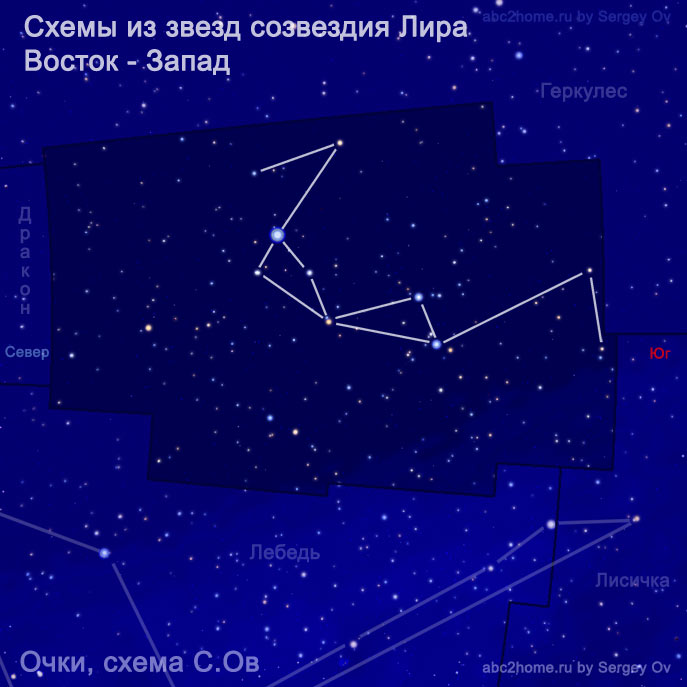
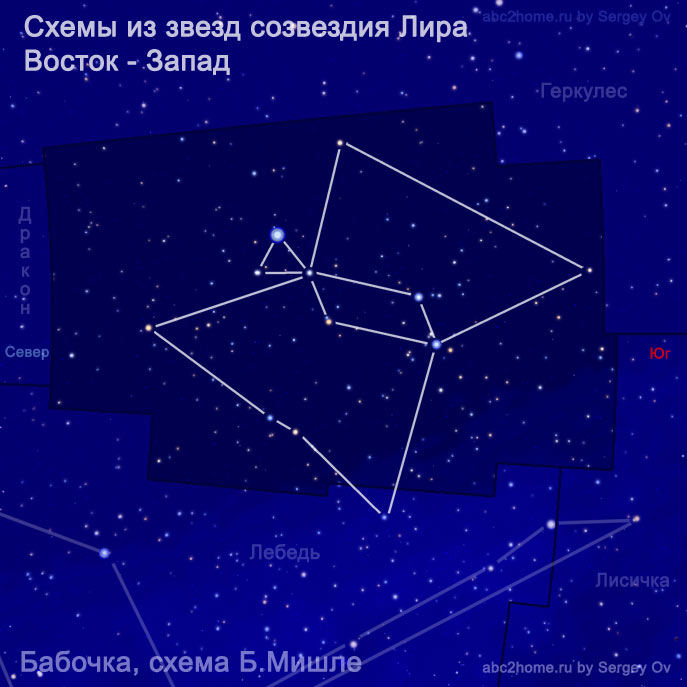
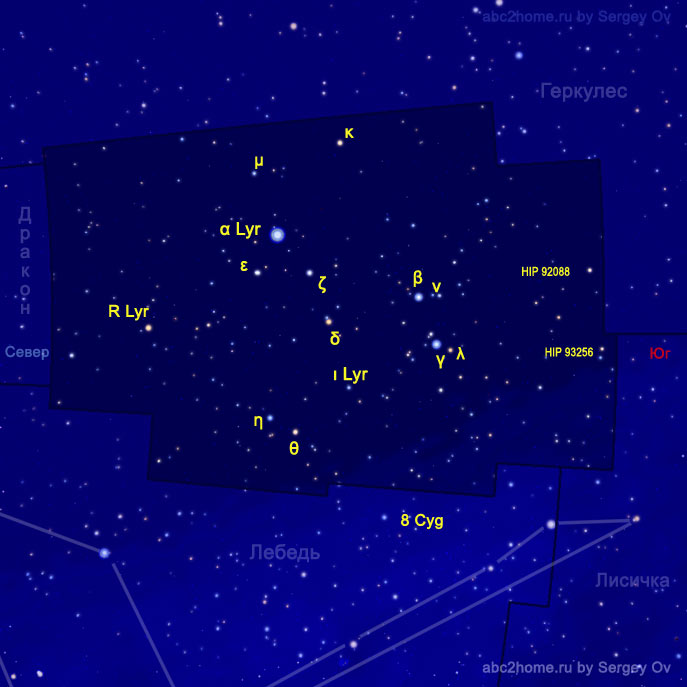
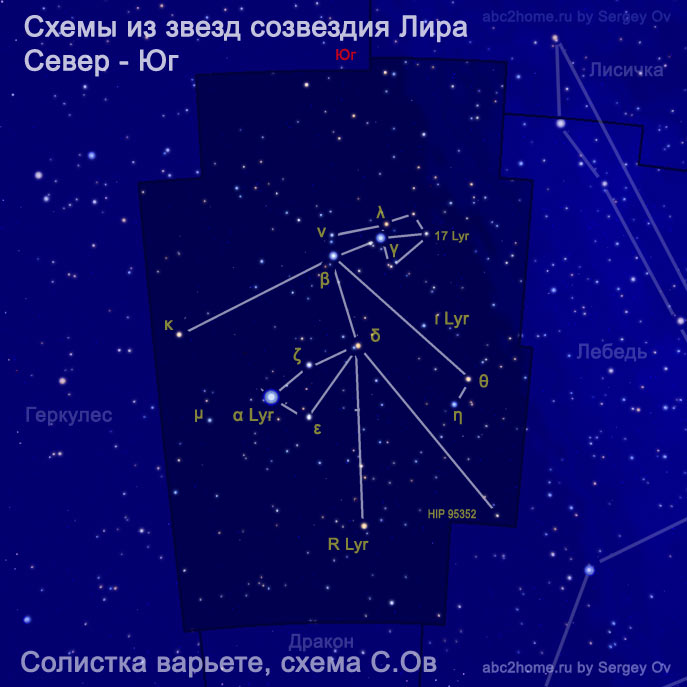
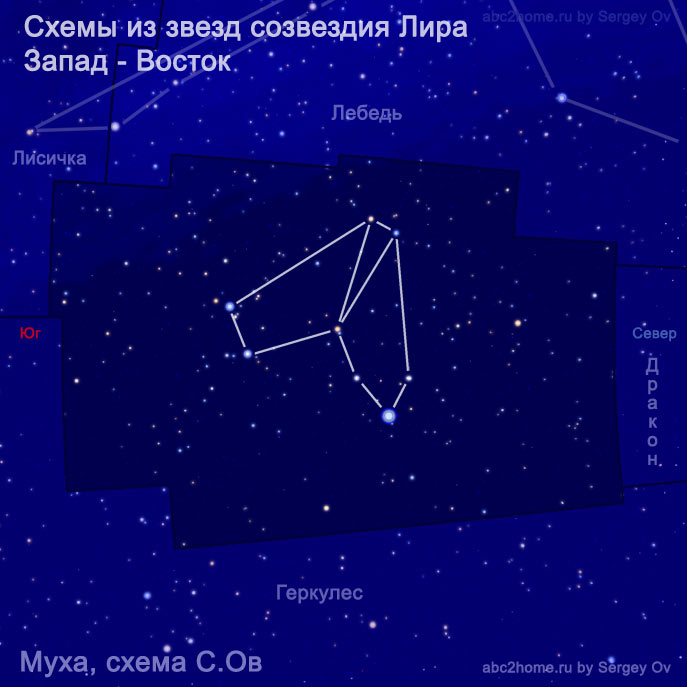
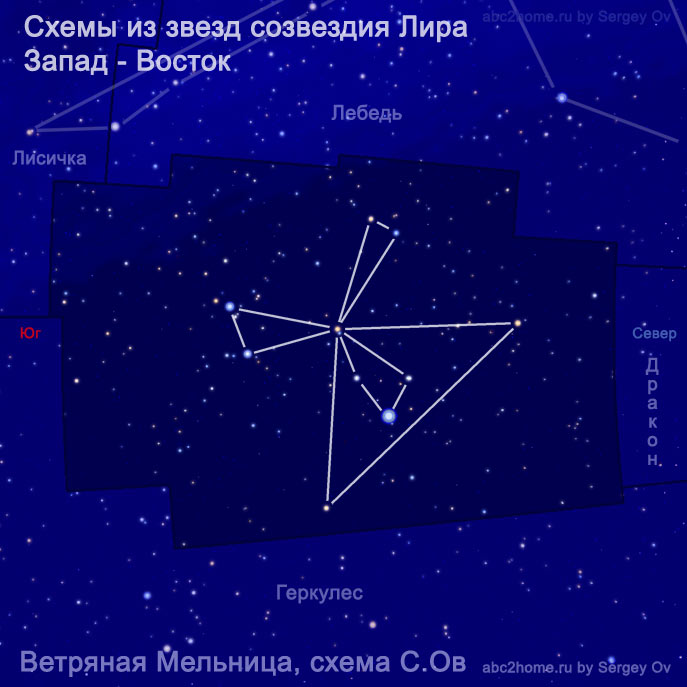
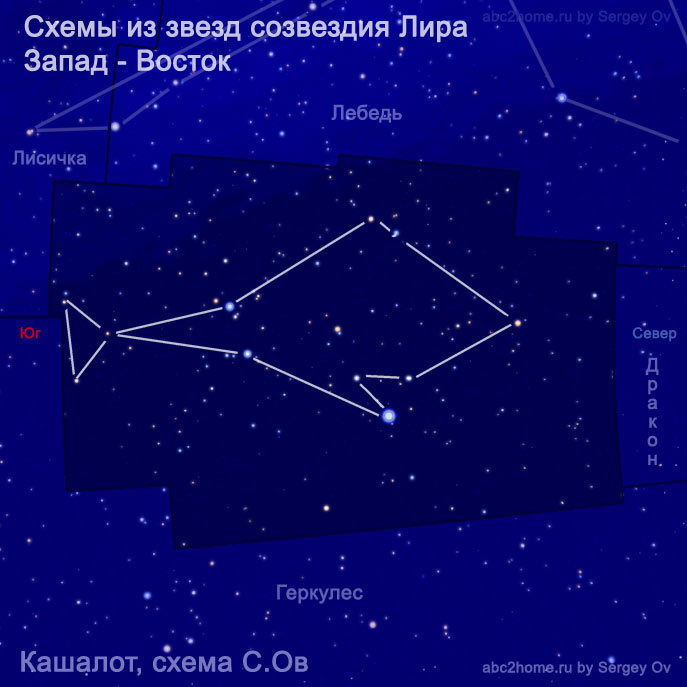
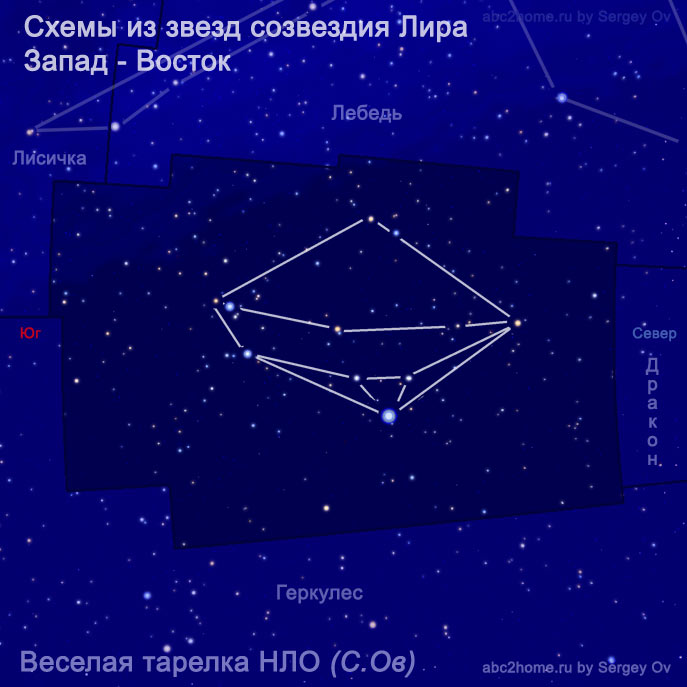
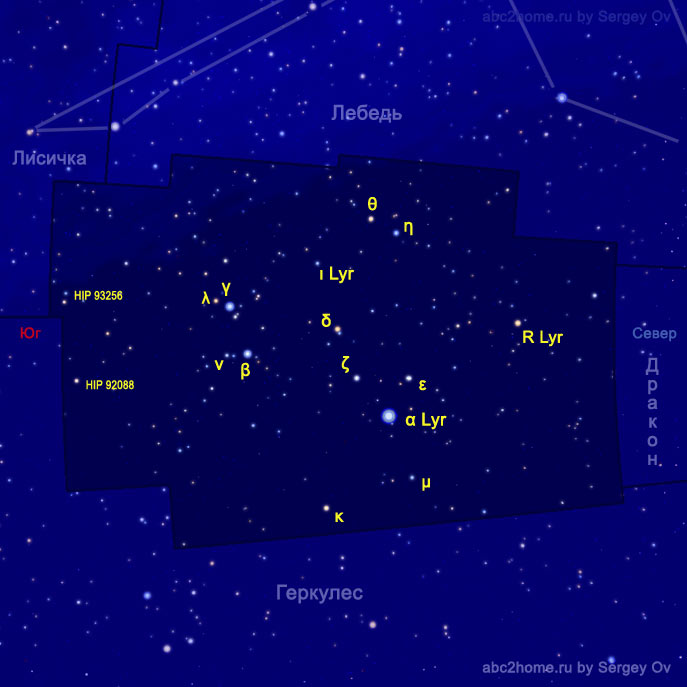
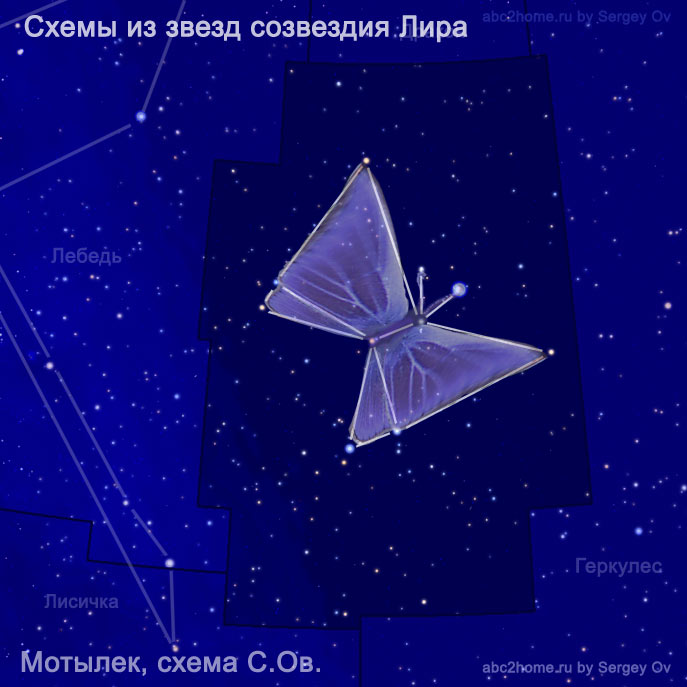
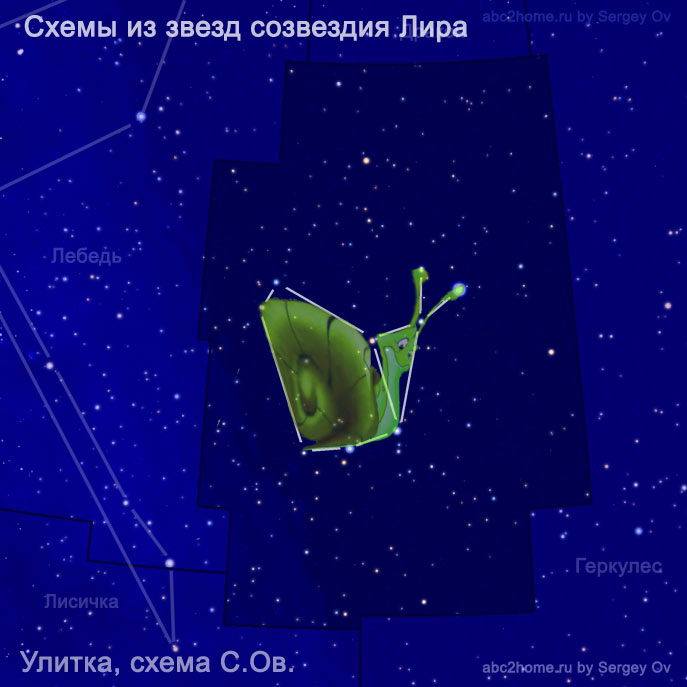
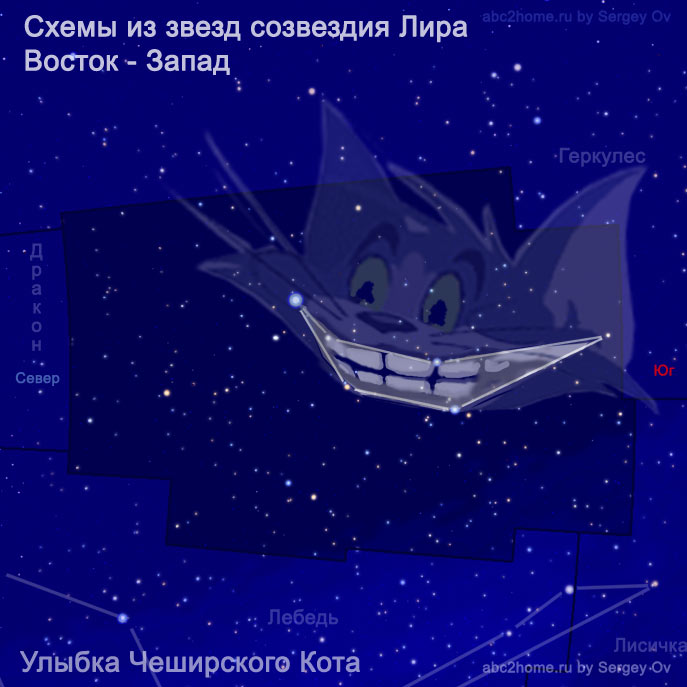
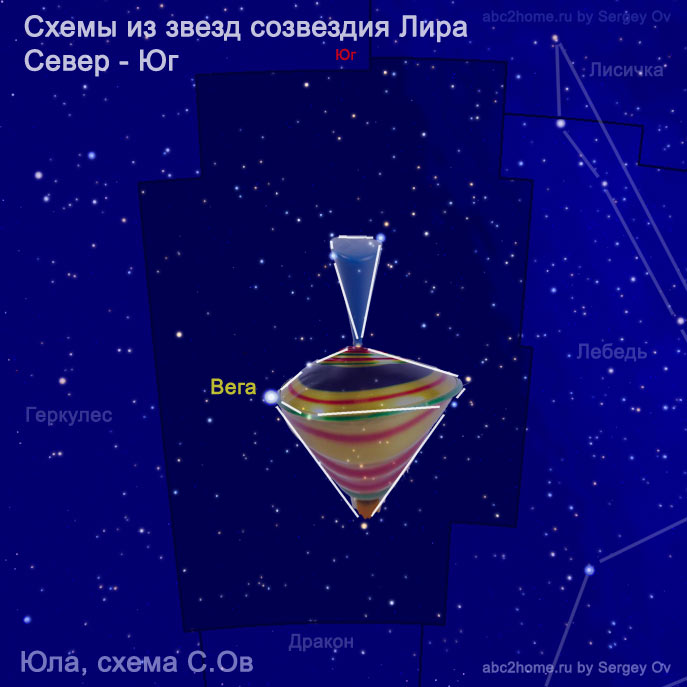
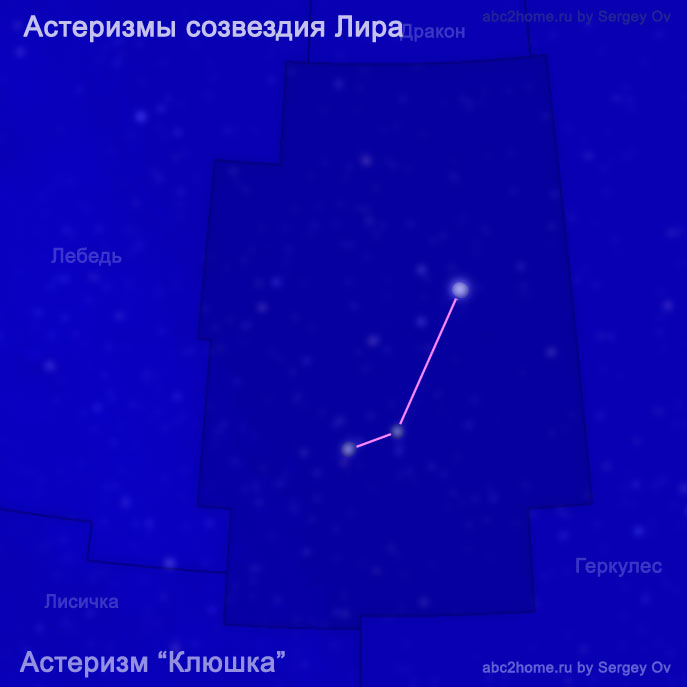
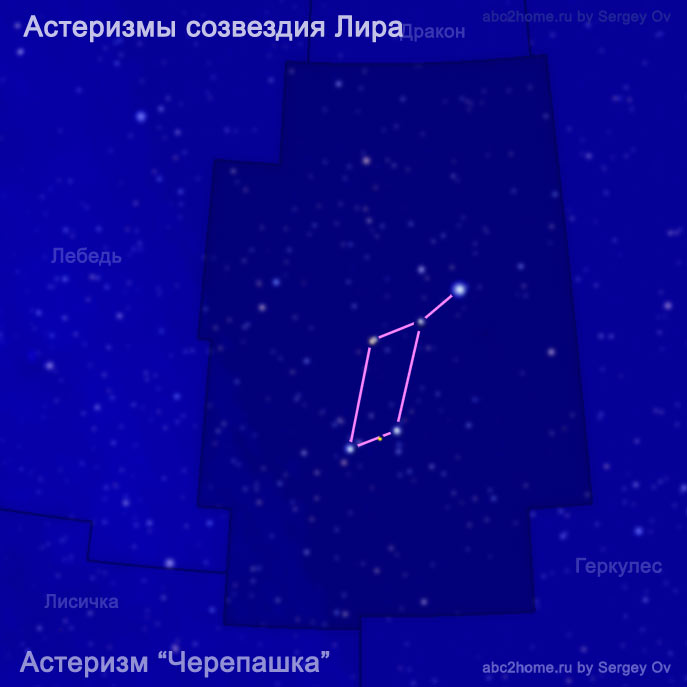
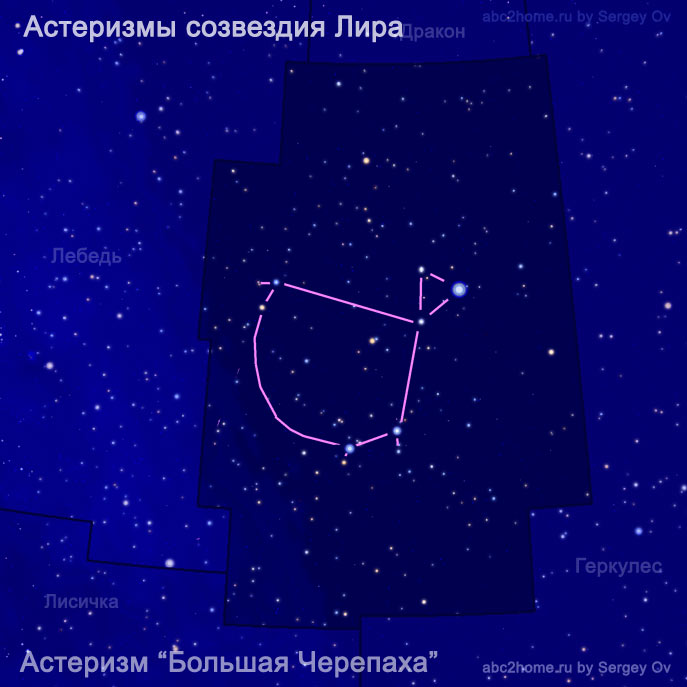
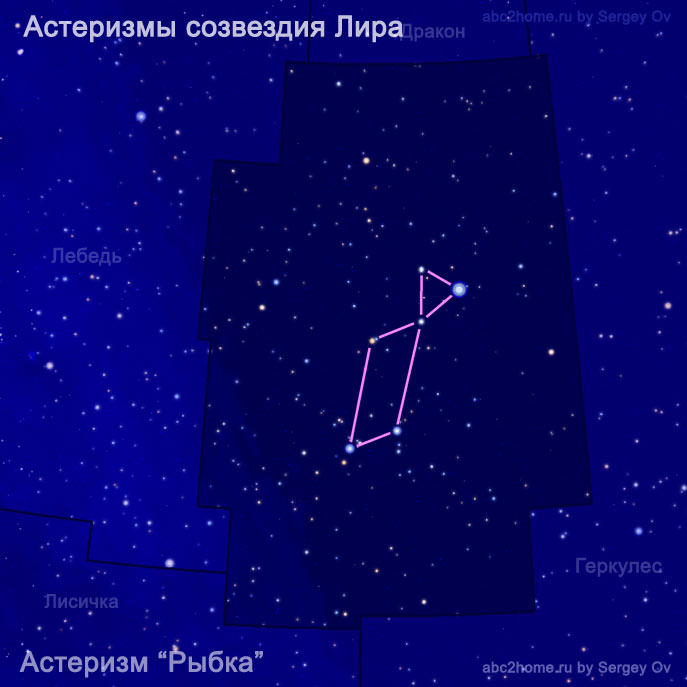
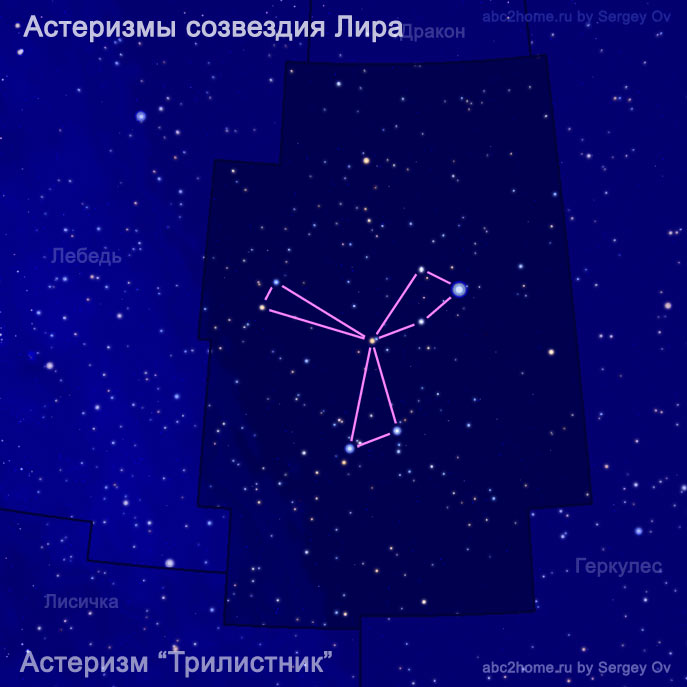
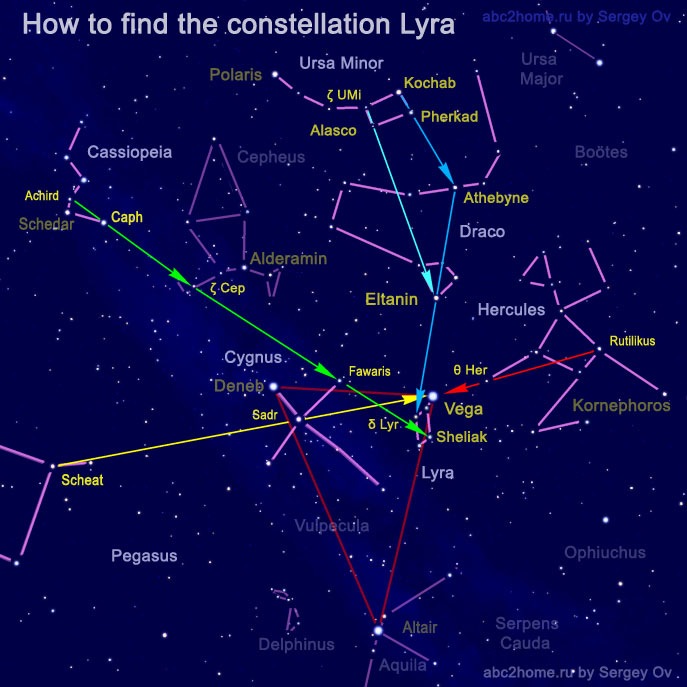
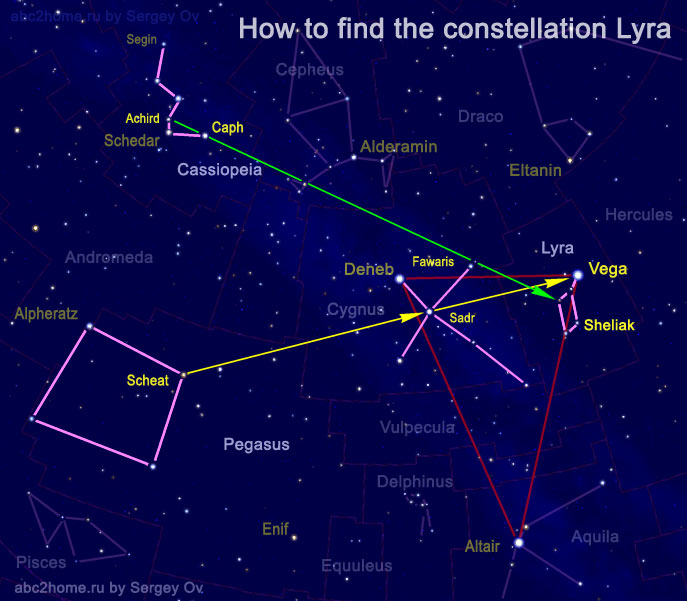
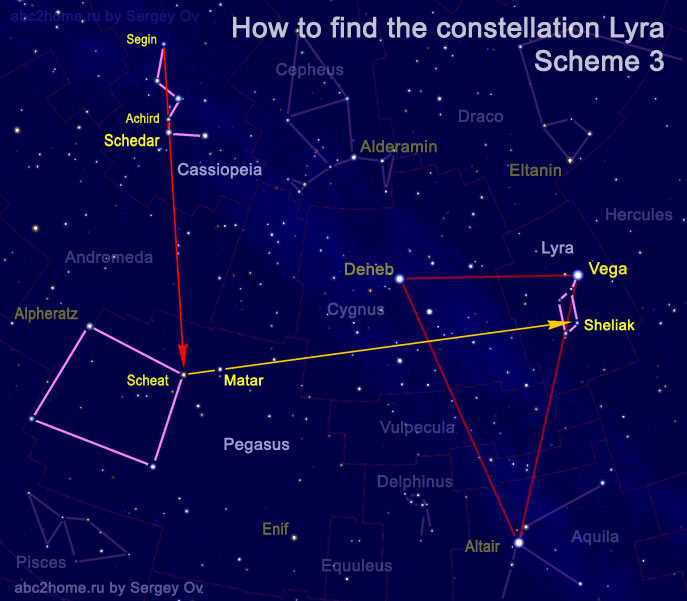
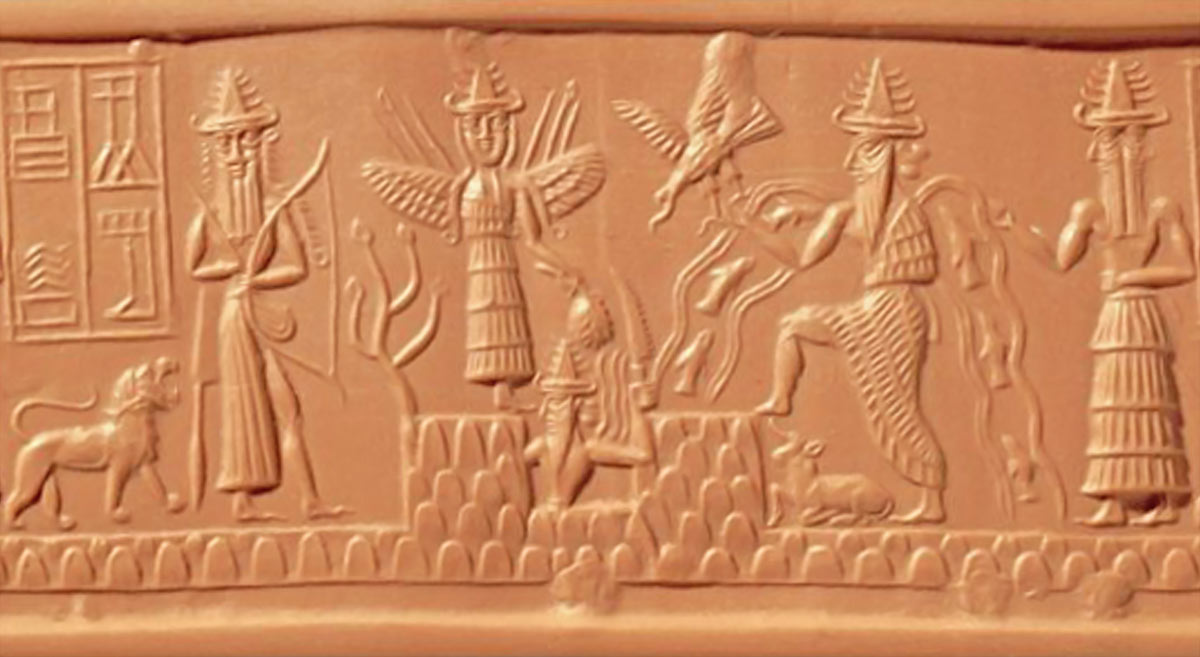
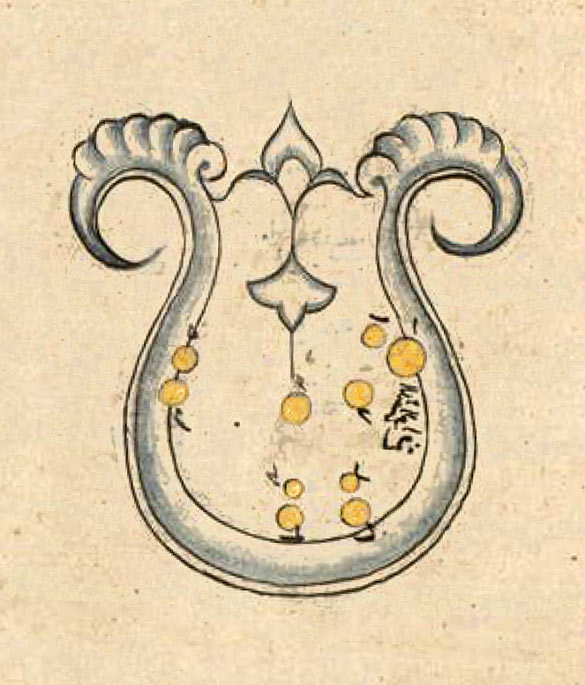
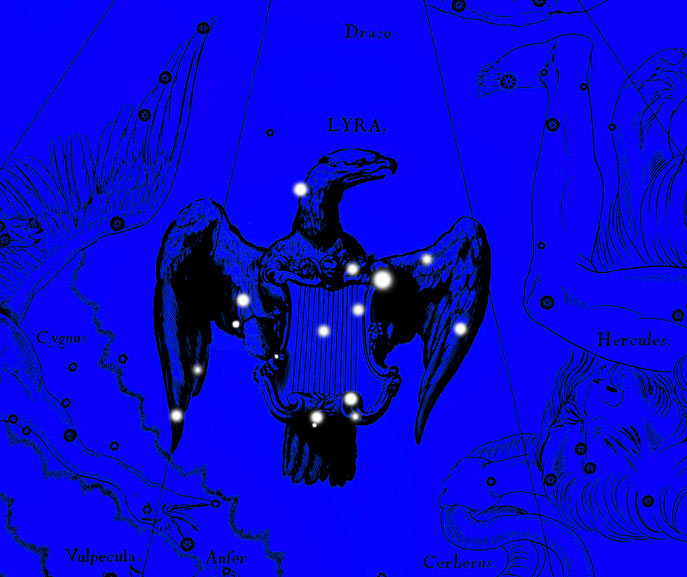
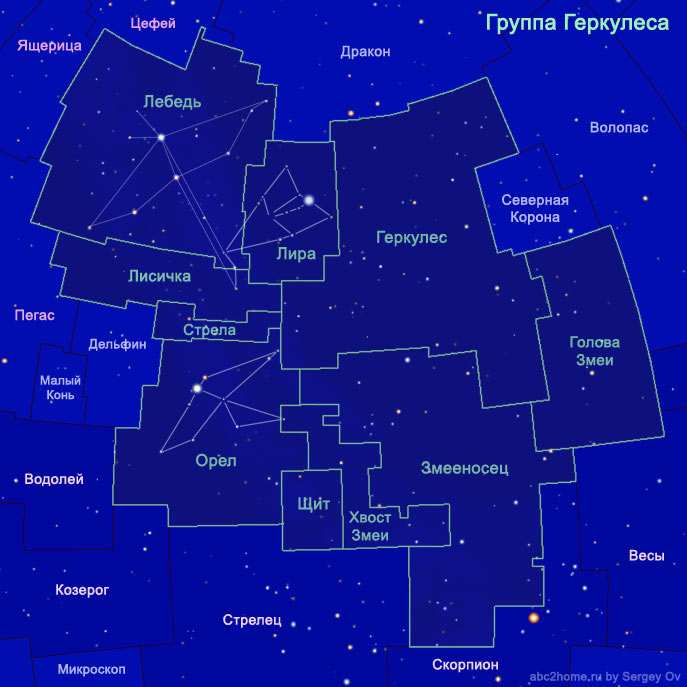
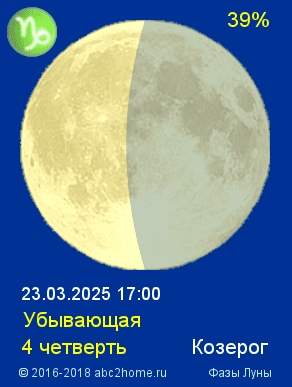


 SIGN ARIES
SIGN ARIES